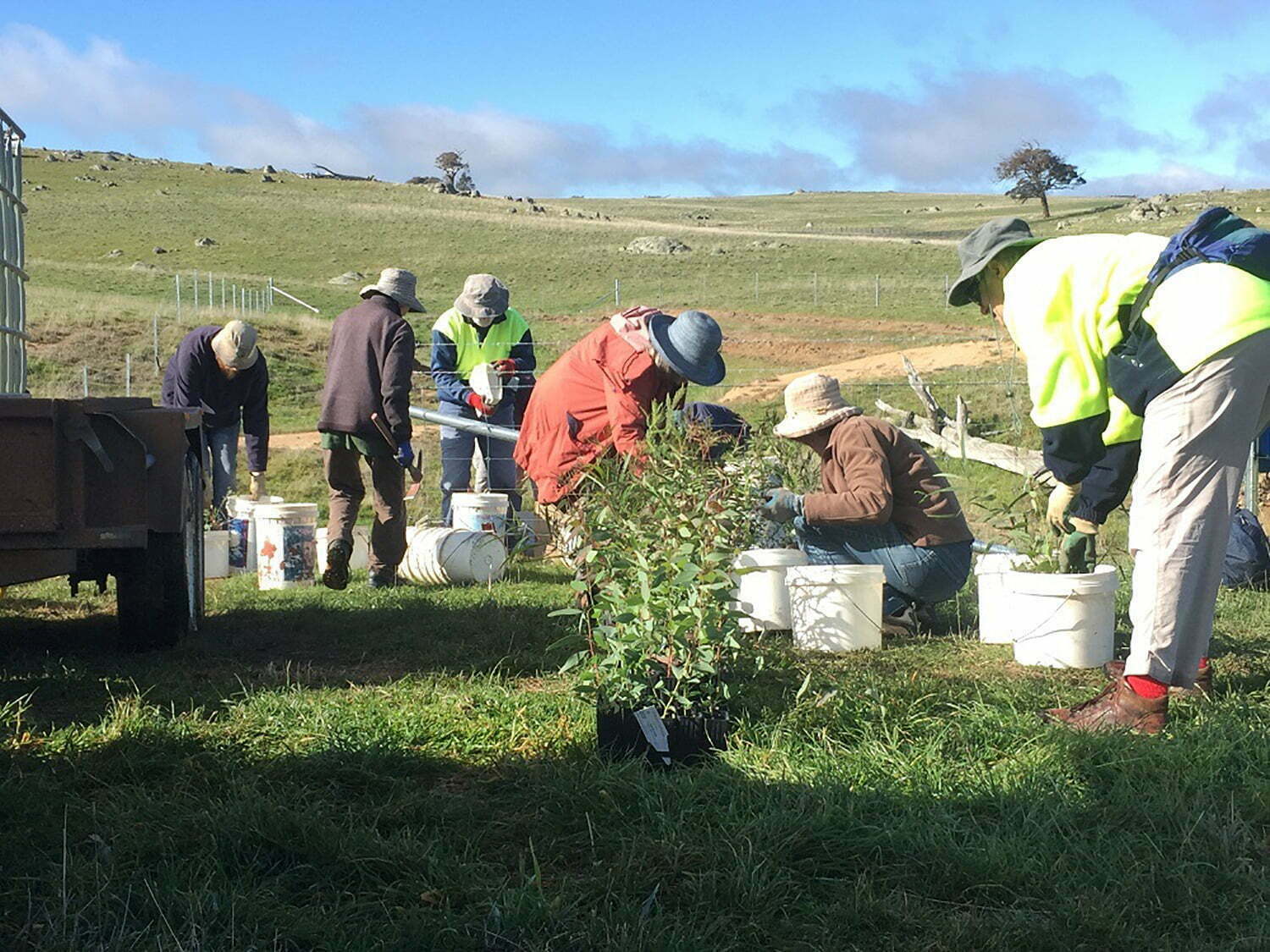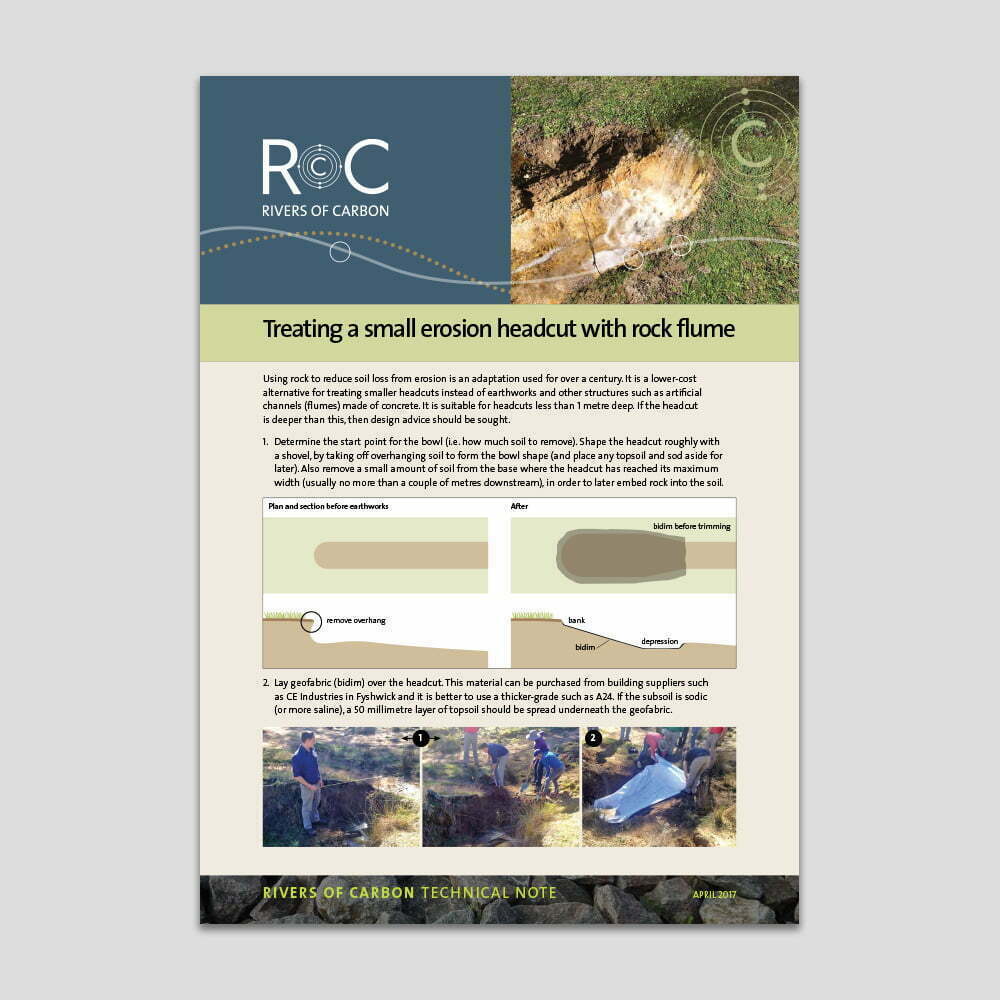“The earth is what we all have in common”
– Wendell Berry
Treating erosion on your place
Treating erosion on your place does not need to be difficult and expensive. Depending on what sort of erosion you are dealing with, much can be done with rock, hay and some willing helpers. You can learn more about some practical ways of dealing with erosion on your farm by watching Margie Fitzpatrick, one of our Rivers of Carbon landholders, talk about the different techniques she has used on her place. We have also produced a free ‘Treating a small erosion headcut with rock flume’ guide that you can download and share with others, just scroll down the page and follow the link to access the guide.
Treating a small erosion headcut with rock flume
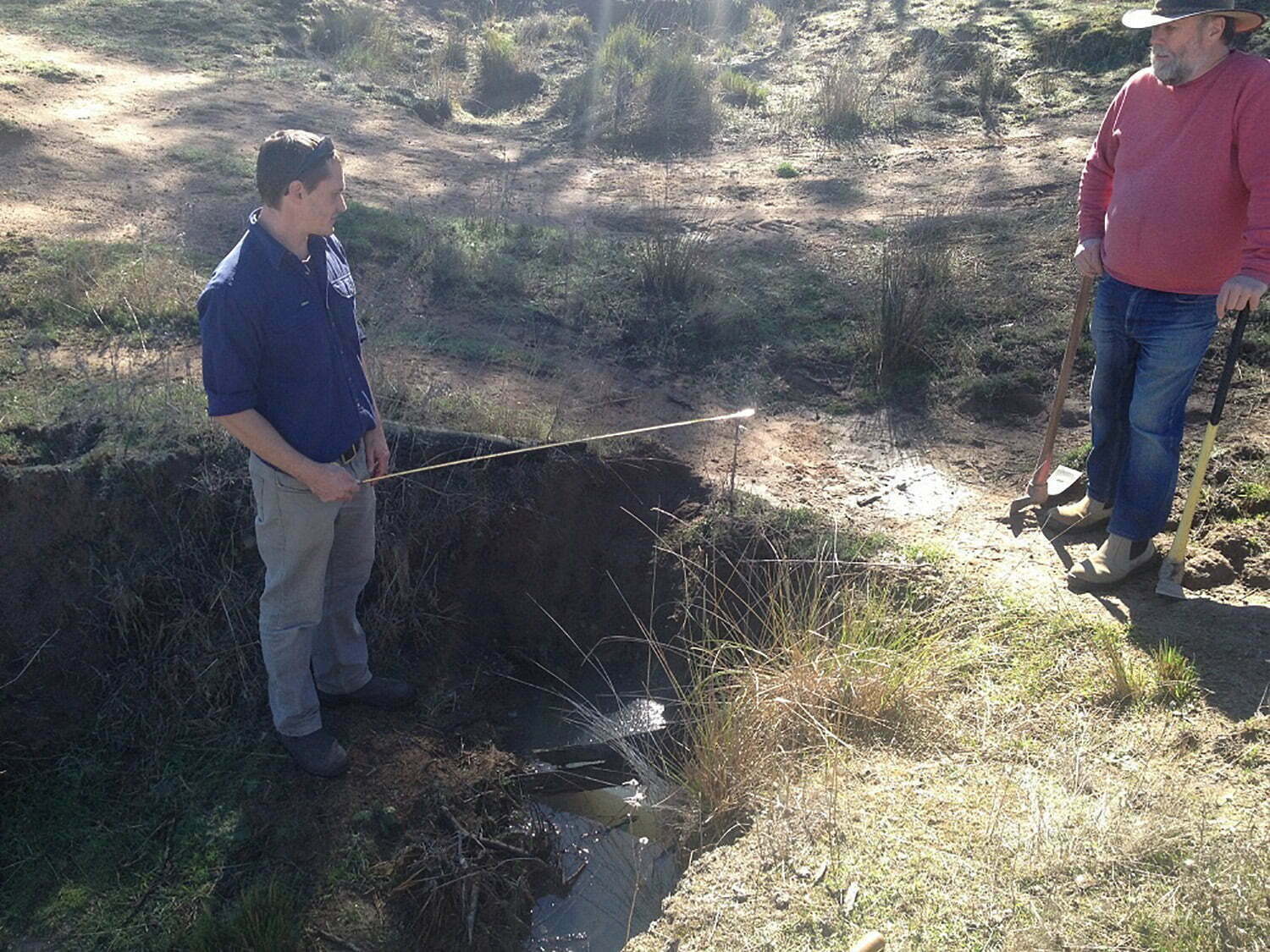
Measuring the headcut.
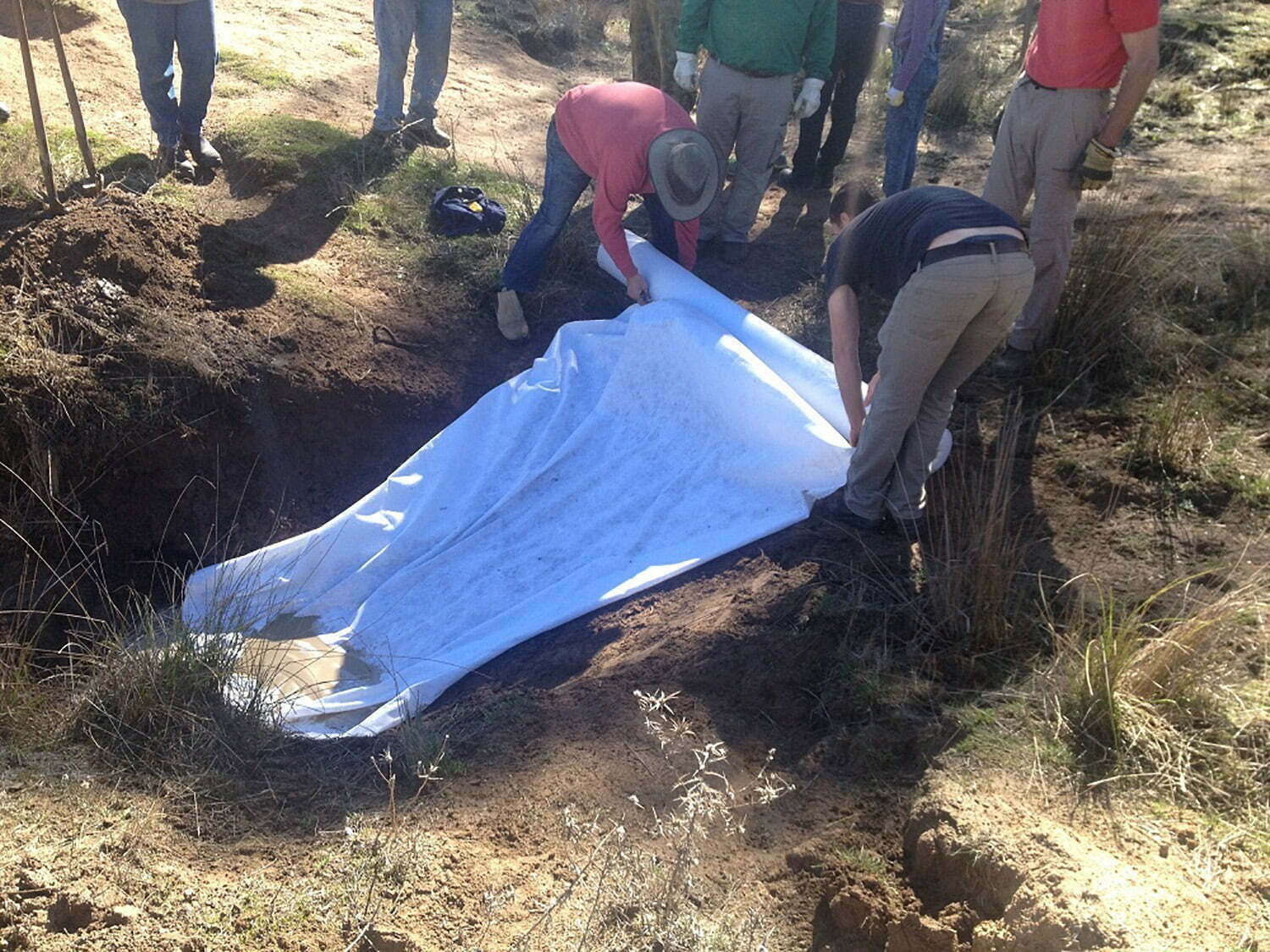
Laying the geotextile.
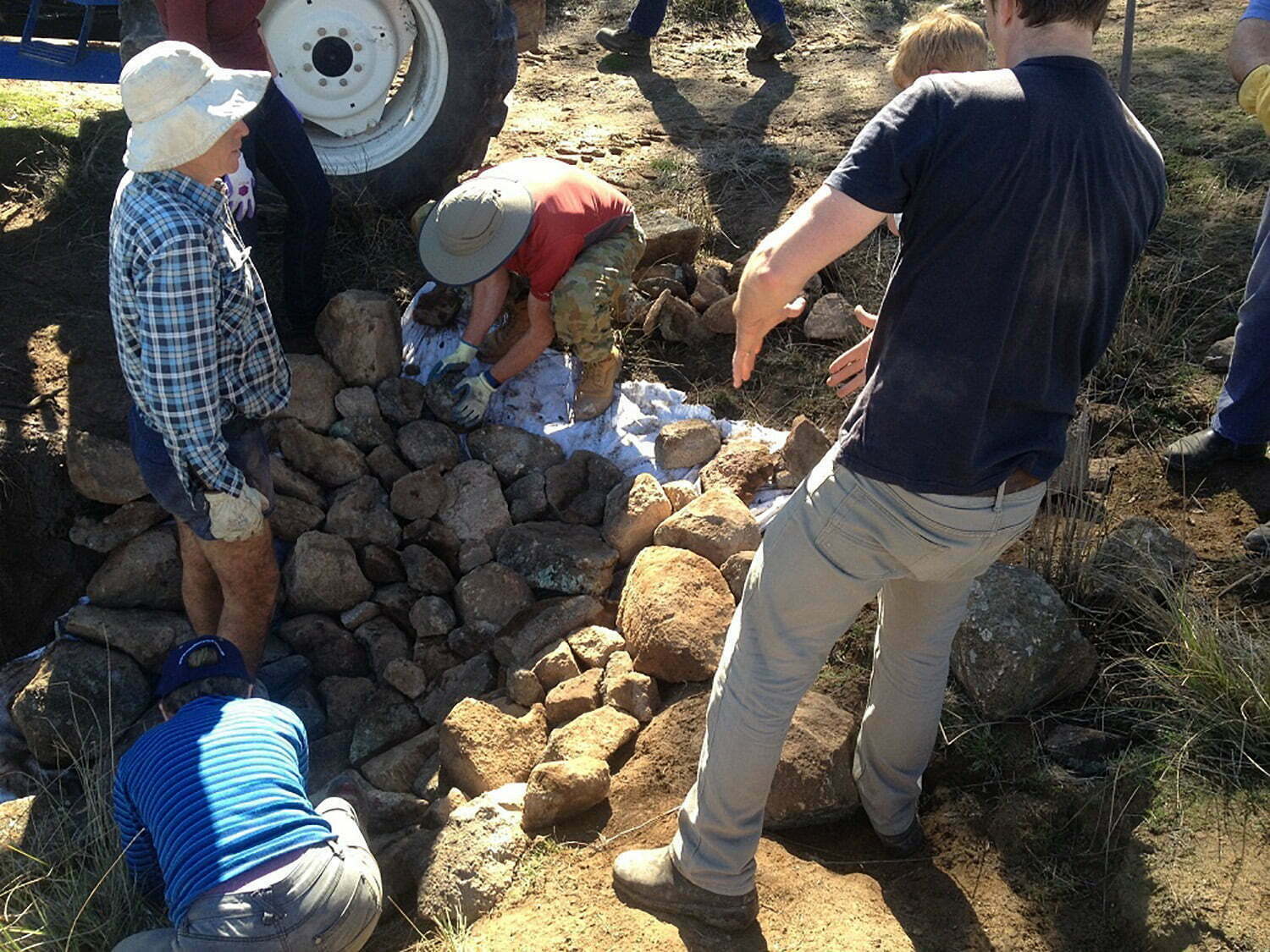
Laying the rocks.
Step 1. Determine the start point for the bowl (i.e. how much soil to remove). Shape the headcut roughly with a shovel, by taking off overhanging soil to form the bowl shape (and place any topsoil and sod aside for later). Also remove a small amount of soil from the base where the headcut has reached its maximum width (usually no more than a couple of metres downstream), in order to later embed rock into the soil.
Step 2. Lay geofabric (bidim) over the headcut. This material can be purchased from building suppliers such as CE Industries in Fyshwick and it is better to use a thicker-grade such as A24. If the subsoil is sodic (or more saline), a 50 millimetre layer of topsoil should be spread underneath the geofabric.
Step 3. Partially fill your area with angular rock of various sizes. The minimum size depends on water flow as it is important that the rock does not wash away. For example, for low-flow areas larger-sized rock may be as small as 20 centimetres diameter, yet for steeper catchments rock will need to be 30–50 centimetres in diameter. Do not use materials other than clean rock without getting advice. Lay down the larger rock first so smaller rock can be interspersed afterwards. Start at the base of the structure and work your way up which helps to ‘key’ the rock together. It is important to ensure the rock is not placed above the surface level of the headcut (to avoid outflanking) and that it is properly embedded into the hole at the base that was dug earlier (to avoid wash away). Cut off any protruding fabric. Note: If the catchment is steeper than 3:1, or there is any considerable concentrated water flow then the rock will need to be of a larger size, and advice should be sought.
4. Plant, or allow grasses to regenerate below your completed structure. Shrubs may also be planted, though grasses are very effective at slowing water. Any left over topsoil and sod can be placed into gaps in the rocks along with site-appropriate grass seed.
Note: We always advise that if you are unsure about whether or not your erosion can be treated with these more simple engineering approaches, you seek expert advice. Your Local Land Services agency is a good place to start, or if you are part of our Rivers of Carbon program, ask Lori, Ben, Lucy or Antia when they are out on your farm and can provide on-site advice.
For more, check out our PDF! 👇
Rivers of Carbon Guide
This PDF details how to treat a small erosion headcut with rock flume. Get your copy by clicking the button below.
Other references:
Riparian Management Guidelines – Chapter 6 The influence of stream management on stream erosion
National Riparian Lands R&D Program – Streambank Stability Fact Sheet
A Rehabilitation Manual for Australian Streams (Ian Rutherfurd, Kathryn Jerie & Nicholas Marsh)
- Volume One (Understanding the science)
- Volume Two (Tools and Techniques)
